Apple TV 2013 (A1469) Short Review: Analysis of a New A5
by Anand Lal Shimpi on March 15, 2013 12:45 AM EST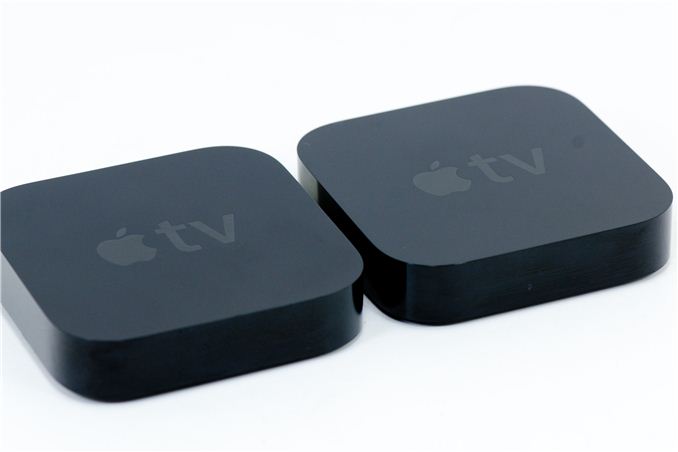
The Apple TV is an incredibly relevant device today. It’s Apple’s attempt to augment the Netflixes and Hulu Pluses of the world with an on-demand cable TV alternative. Other companies are working on the same problem, with different solutions. Even Intel recently threw its hat into the ring.
Apple famously refers to the Apple TV as a hobby, but I view it as more of an experiment. A test for the infrastructure, the delivery mechanism and a test of how to work with content companies. Long term if the Apple TV is to become something much more than it is, it’ll have to be more aggressive in delivering content, but for now it exists as a very successful experiment.
Apple shipped five million Apple TVs last year. That’s $495M in revenue for the year just from the Apple TV. That’s not a lot of money for Apple, but it’s a business of considerable size. Given the low (relative to Apple’s other products) price point for the Apple TV, and steadily ramping shipment volume, it makes sense that the device would be a target for cost optimization. And that’s exactly what appears to have happened with the latest update to the platform.
Apple still refers to this new Apple TV as a 3rd generation platform, and it doesn’t introduce any new features, but it does carry a different model string:
| Apple TV Models | |||||
| Year Released | Model | New Features | |||
| Apple TV (1st gen) | 2007 | A1218 | Initial Release | ||
| Apple TV (2nd gen) | 2010 | A1378 | New Platform | ||
| Apple TV (3rd gen) | 2012 | A1427 | 1080p, WLAN+ | ||
| Apple TV (3rd gen, rev2) | 2013 | A1469 | New Silicon | ||
The small increment in model gives you an indication of the magnitude of change here. No new functionality is added, but the device just gets cheaper for Apple to make. How Apple got there is particularly interesting.
Out with the Old, in with the Same
The Apple TV is a great device for anyone who lives purely within the Apple ecosystem. Users looking to play their own content that’s not already in an iTunes friendly format will have to either transcode or look elsewhere for something a bit more flexible. Apple must walk a fine line between tending to the needs of its customers while at the same time not upsetting the content owners that work with the company on the iTunes side of things. If you’re looking for a pirate box, the Apple TV is not the best solution.
The Apple TV runs its own OS and there’s no application compatibility between it and the iPhone/iPad, despite running on very similar hardware and software. I suspect Apple recognizes the difficulty in simply opening the floodgates for a bunch of applications that were optimized for touch to run on a platform that’s controlled with a tiny remote.
The Apple TV OS itself saw a major update last year, substantially changing the UI. Its functionality remained largely unchanged with this update, and since then not all that much has changed either - although there have been improvements since our review last year. Hulu Plus is now a supported streaming service on the Apple TV.
As Brian summed up in our last review, the Apple TV remains a competent Netflix box and does a great job of interfacing with all iTunes services (Photo Stream, iTunes Match, as well as iTunes video content). There’s always room for improvement of course, but if you do live in the Apple/iTunes ecosystem the experience is pretty decent.
The Apple TV also acts as an AirPlay sink, you can use it as a wireless receiver for display sent from a Mac running Mountain Lion as well as your iPhone/iPad.
None of this has changed with the new Apple TV, nor has the external hardware - we’re still dealing with the same chassis and port configuration as before. To truly appreciate what’s new about A1469 however, you have to dive inside.
Inside A1469
A1427 (left) vs. A1469 (right)
Getting inside the new revision of the Apple TV is no different than the previous model, the bottom snaps into place so you’ll need to pry it open with some (strong) plastic tools. Once the bottom is somewhat separated, just pull it out and you’re done.
Internally the name of the game is cost reduction. Whereas the previous model (A1427) had a metal slab stacked on top of the PCB, the new Apple TV moves the heatspreader to the bottom of the chassis entirely - simplifying assembly.
The power supply remains unchanged (3.4V, 1.75A), and there are just two cables running to the Apple TV’s PCB: one for the PSU and one for the power/status LED. Remove a few screws and we can pull out the PCB.
The overall PCB size hasn’t changed tremendously, but the layout and component arrangements have. The changes to the bottom of the PCB (what you first see when you open up the Apple TV) aren’t significant, it’s what happens on the flip side that’s more interesting.
A1427 (left) vs. A1469 (right)
Apple moved to a highly integrated ceramic package from USI for the WiFi/BT solution, which saved a good amount of board area. Apple also went back to a single antenna design, further reducing complexity from the short stint with the dual-antenna design in the A1427 model.
Removing the single large EMI shield we see the remaining changes. The single-core A5 SoC saw a package size reduction, and the DRAM is no longer integrated in a PoP (Package-on-Package) stack but is rather a discrete component.
| Apple Silicon Evolution | |||||
| Internal Name | External Name | Used In | Fab + Process Node | ||
| S5L8940 | Apple A5 | iPad 2, iPhone 4S | Samsung 45nm | ||
| S5L8942 | Apple A5r2 | iPad 2,4, Apple TV 3 | Samsung 32nm | ||
| S5L8945 | Apple A5X | iPad 3 | Samsung 45nm | ||
| S5L8947 | Apple A5 | Apple TV 3r2 | Samsung 32nm | ||
| S5L8950 | Apple A6 | iPhone 5 | Samsung 32nm | ||
| S5L8955 | Apple A6X | iPad 4 | Samsung 32nm | ||
The old A5 package measured roughly 14mm x 13mm, while the new package is approximately 12mm x 12mm. Chipworks removed and de-lidded the new chip, determining that it’s truly a new piece of silicon with a single core ARM Cortex A9 and a dual-core GPU. The previous part was a die harvested A5 with one CPU core fused off (S5L8942), but this new chip physically removes the unused core (S5L8947). The GPU seems to be untouched. There are other changes however, resulting in a 37.8mm^2 die down from 69mm^2 in the previous A5 design.
Thanks to Chipworks’ analysis we know that both of these chips are still made on Samsung’s 32nm process, meaning that Apple’s experimenting with a new silicon revision isn’t to act as a pipe cleaner for a new process (as it was with the previous gen Apple TV) but rather to reduce cost.
The move to a smaller die directly impacts cost, as does the move away from a PoP stack and to external DRAM. It could very well be that Apple is finally selling enough Apple TVs to warrant a custom A5 of its own rather than continue to ship die harvested A5s from iPhones/iPads. The problem with relying exclusively on die harvesting is that eventually, as yields improve, you end up selling fully functional (and unnecessarily expensive) silicon into a market that’s unwilling to pay for the added performance. If you’ve got the volumes to justify it, it usually makes sense to bring out custom silicon for major price points. This is why Intel ships multiple configurations in its processor families (e.g. there are distinct dual and quad-core Ivy Bridge die in Intel’s lineup, this avoids Intel having to sell a disabled $300 quad-core chip as a $100 dual-core chip).
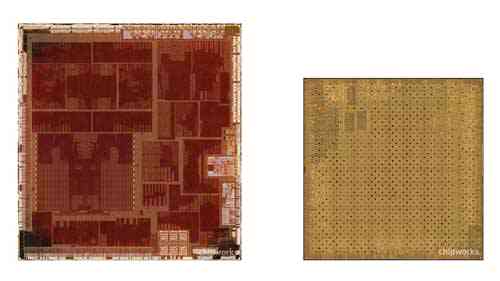
32nm Apple A5 - S5L8942 (left) vs. new Apple A5 for ATV S5L8947 (right) - Chipworks
There’s also the possibility that Apple would use this part in another device entirely.
I was curious to see if power was impacted at all, but as we’ve seen in previous Apple TVs the power draw at the wall is very low - on the order of a couple of watts. Slight silicon changes require much finer grained power analysis.
Pulling a page from our recent foray into measuring tablet power consumption, I wired an external power supply to the Apple TV motherboard and measured total platform power draw. There aren’t exactly any benchmarks for the Apple TV, but I put together a few tests to stress video decode, CPU and a little bit of GPU performance.
All of my tests were run on Ethernet, but I did connect to an 5GHz 802.11n network to see if there were any changes in power consumption due to the new wireless stack.
On Brian’s suggestion I streamed the hilariously awesome Netflix 29.97 short, as well as the 1080p Skyfall trailer. Both of these tasks should be handled by the A5’s video decode block.
I also enabled Photo Stream on the Apple TV, and recorded power consumption while scrolling back and forth through a gallery of my last 68 photos. This test drives CPU usage and power consumption.
Finally I ran an idle power test.
| Apple TV (3rd gen) Platform Power Consumption | ||||
| A1427 (2012) | A1469 (2013) | |||
| Idle - Min Power (Ethernet Connected) | 1.41W | 0.70W | ||
| Photo Stream Scrolling (CPU Test) | 1.84W | 1.07W | ||
| Skyfall 1080p iTunes Trailer (Ethernet) | 1.58W | 0.81W | ||
| Skyfall 1080p iTunes Trailer (5GHz WiFi) | 1.55W | 0.85W | ||
| Netflix 29.97 Short (Ethernet) | 1.62W | 0.85W | ||
The power savings are nothing short of significant. The previous generation Apple TV wasn’t really a power hog, with platform power maxing out at around 1.6W, but the new model tops out at just a watt. Overall the power savings seem to be around 800mW across the board.
With no change to process technology, I can only assume that the reduction in power consumption came from other architectural or silicon optimizations. The significant power reduction is the only thing that makes me wonder if this new A5 silicon isn’t destined for another device, perhaps one powered by a battery. That’s pure speculation however, it could very well be that the A5 in the Apple TV is just lower power for the sake of being better designed.
Floorplan of new Apple A5 S5L8947 for ATV - Chipworks
Brian asked me how long it would take to make up the cost of the new Apple TV compared to the previous model (A1427) in power savings alone. Assuming you’re using the Apple TV for watching video 8 hours a day, every day of the year, you’d save about $0.26 per year on your power bill (assuming $0.11/kWh). You’d break even on the $99 cost of a new Apple TV in about 385 years. Maybe by then we’ll actually have a true replacement to cable TV.
I didn’t notice any performance difference between the two platforms, but given the nature of the Apple TV it’s kind of difficult to really say for sure.
Wireless Performance
With the previous model (A1427), Apple improved WiFi performance through the use of two antennas and driving the primary antenna at a higher gain. With the A1469 model, Apple moves back to a lower gain, single antenna design however driven by a new WiFi solution (likely BCM4334 based).
I was curious to see if there was a noticeable difference in WiFi performance, however in my testing I noted very similar performance to the A1427 version of the 3rd gen Apple TV:
| Apple TV (3rd gen) WiFi Performance | ||||||||||
| Apple TV (A1469) | Apple TV (A1427) | |||||||||
| Signal (dBm) | Noise (dB) | Rate (Mbps) | Band (GHz) | Signal (dBm) | Noise (dB) | Rate (Mbps) | Band (GHz) | |||
| Location 1 (Close) | -38 | -95 | 54 | 5 | -44 | -96 | 54 | 5 | ||
| Location 2 (Far) | -70 | -88 | 54 | 2.4 | -69 | -90 | 54 | 2.4 | ||
Final Words
The latest Apple TV doesn’t change functionality, nor does it appear to be a step back in performance. The A1469 model really helps Apple reduce costs, both through better engineering and through a physically smaller A5 SoC.
The implications of this smaller, lower power A5 SoC are unclear to me at this point. It seems to me that the Apple TV now sells well enough to warrant the creation of its own SoC, rather than using a handmedown from the iPad/iPhone lineup. The only question that remains is whether or not we’ll see this unique A5 revision appear in any other devices. There’s not a whole lot of room for a single-core Cortex A9 in Apple’s existing product lineup, so I’m encouraged to believe that this part is exclusively for the Apple TV. Then again, I’m not much of a fortune teller.


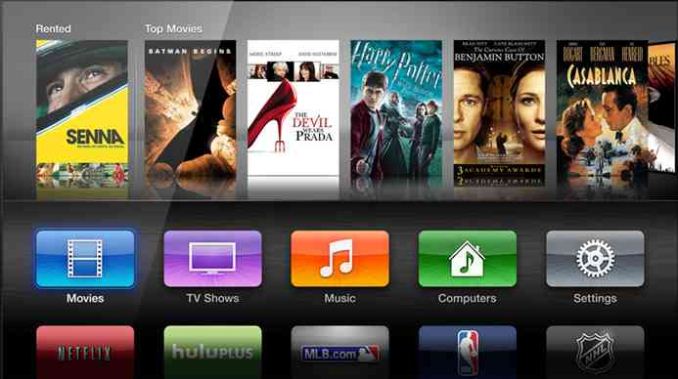
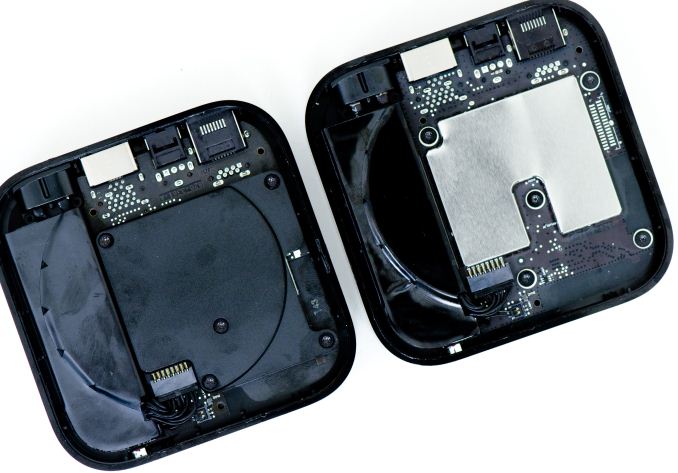






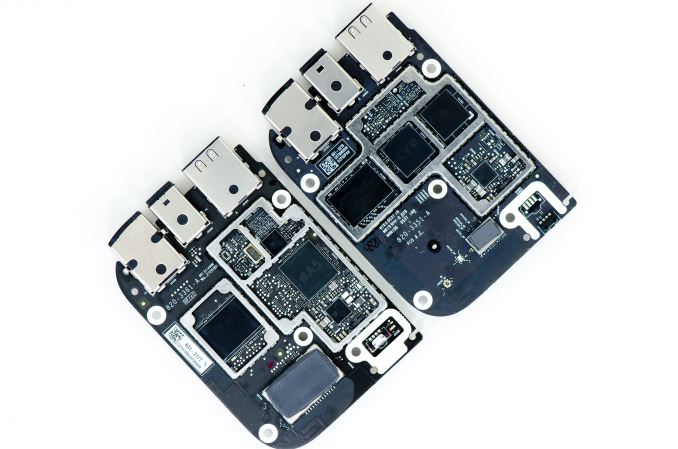
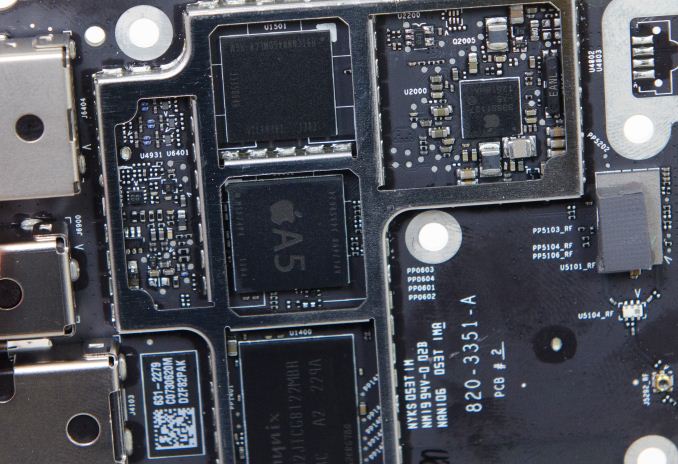
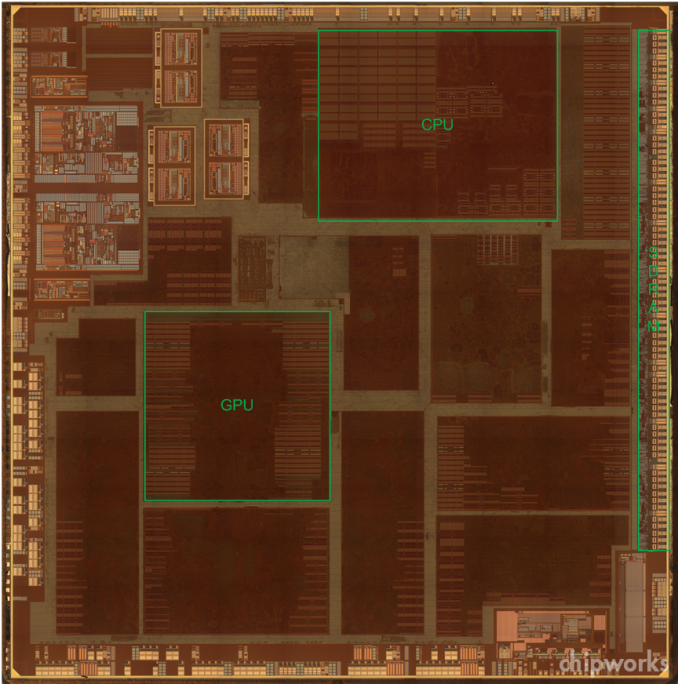
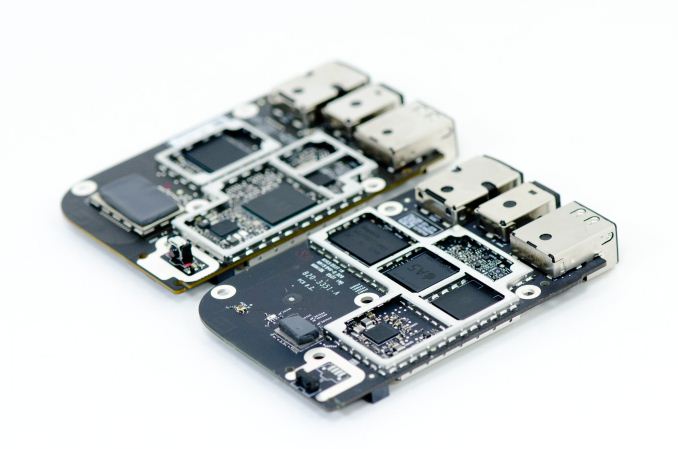








52 Comments
View All Comments
thesavvymage - Friday, March 15, 2013 - link
You’d break even on the $99 cost of a new Apple TV in about 385 years. Maybe by then we’ll actually have a true replacement to cable TV.Not often that I laugh during an article, but this got me haha
fnord123 - Friday, March 15, 2013 - link
I think your math is wrong - the new AppleTV consumes about 0.7W less no matter what it is doing.0.7W * 24 hr/day * 365 days/year * 1KWhr/1000W = About 6KWHr per year. At around $0.12 per KWHr, a $99 AppleTV pays for itself in $99 / (6 * 0.12) = About 137 years, not 385 years.
commondandy - Friday, March 15, 2013 - link
8 hours a day, not 24.Seemone - Friday, March 15, 2013 - link
after all to watch TV 24 hours a day we'd have to factor in caffeine costs.Torrijos - Friday, March 15, 2013 - link
What he meant is that even idle the AppleTV consumes 0.7w less, so even when you're not watching anything it saves you a little bit of money (power). So I agree with him, since in every state you save 0.7w it pays itself in 137 years.Helmore - Friday, March 15, 2013 - link
Doesn't the Apple TV have a standby mode? If so, would both their standby modes be roughly the same power consumption?Gigaplex - Friday, March 15, 2013 - link
Why is it not simply turned off? Does the Apple TV not have a low power "off/sleep" mode?Torrijos - Friday, March 15, 2013 - link
Isn't the "Idle" state the low power sleep state?igloo66 - Monday, October 31, 2016 - link
Ok, I am a NetFlix junkie who loves Apple products. We were paying over $70.00 mo. for basic cable + $8.64 mo. for NetFlix ($7.99 + Hamilton County, TN tax), altogether totaling over $80.00 per month easily. We finally dropped cable, bought the free TV antenna and now watch everything we enjoyed on TV for $8.64 per month...for just the price of NetFlix. My Apple TV paid for itself in just over one month. I don't know how much power it uses but Netflix does pause to ask its viewers if they are still watching. If it doesn't receive a response within (what it believes to be a reasonable amount of time), both my TV and my Apple TV will turn off, although you can put the Apple TV to sleep in the "Settings". Sounds like a great savings of power saver to me since NetFlix is running on my Apple TV about 25% of the day between all of us. Just saying since I am not a techie (not even close) but I am loving my Apple TV so much more after ditching cable altogether!! Don't just "Ditch the Dish", by a free TV remote, a subscription to NetFlix and an Apple TV and ditch it all!Disclaimer: We don't actually need the Apple TV because we can watch NetFlix on my Mac, my iPhone or our iPad's, but it's really great to watch it in the living room, the den and/or the bedroom instead. That way it feels just like when we had expanded cable [which costs even more] with Tivo/On Demand... (pausing, rewinding, fast-forwarding) just without the bill.
zeagus - Friday, March 15, 2013 - link
0.7W is too high for ya? :)